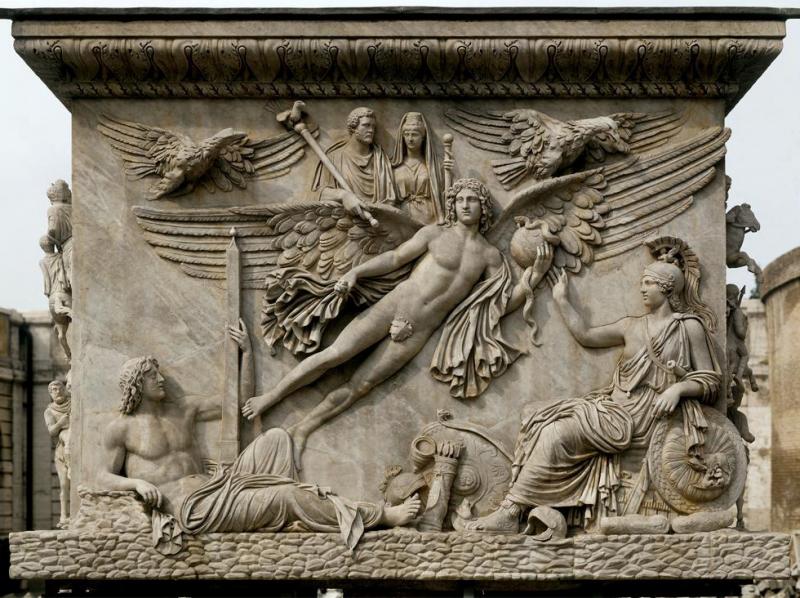The Female Persona
 Ancient images of women are remarkable for their ambiguity. Sometimes, identification is straightforward: on the Gerasa mosaics in this exhibition, Erato, muse of lyric poetry, is easily recognized by her lyre and name written in Greek above her, while the double flute marks Euterpe as the muse of music. Often, however, it is impossible to distinguish a living woman from a deity like Aphrodite or from an abstract personification such as Tyche (“Fortune”). The associative nature of female likenesses suggests a protean quality of women’s identity and the manipulation of physical appearances to certain ends.
Ancient images of women are remarkable for their ambiguity. Sometimes, identification is straightforward: on the Gerasa mosaics in this exhibition, Erato, muse of lyric poetry, is easily recognized by her lyre and name written in Greek above her, while the double flute marks Euterpe as the muse of music. Often, however, it is impossible to distinguish a living woman from a deity like Aphrodite or from an abstract personification such as Tyche (“Fortune”). The associative nature of female likenesses suggests a protean quality of women’s identity and the manipulation of physical appearances to certain ends.
Portraits of real-life women served a variety of purposes, both public and private, most commonly as memorials on funerary monuments. While the specific origins and functions of many of the marble heads on view in this gallery are unknown, the selection offers a glimpse at the broad spectrum of image types. In contrast to the classicizing faces of goddesses that celebrate an ideal of female youth and beauty, such as the elegant portrait of a Ptolemaic queen, images of living Roman women were often veristic, ostensibly recording the specific appearance of a unique individual, “warts and all.” The over-sized marble head at the far right exemplifies this candidness in portraiture, capturing the broad, wrinkled features of an aged Roman woman.
Representations of ancient women express not only concepts of femininity, but also the social and political meanings attributed to womanhood. Public monuments deliberately blur an empress’s likeness with that of a complementary personified virtue, such as Modesty. Coins provide a similar opportunity to reinforce a ruler’s policy or advertise an important event. A coin face (obverse) might display an empress’s signature profile and hairstyle, while a female figure on the flip side (reverse) associates her with positive values such as Concordia or Pietas. Portrayed as moral superiors, empresses like Faustina the Elder became trendsetters, popularizing their elaborate coiffeurs, so that it is sometimes difficult to distinguish the empress from an anonymous woman living in the Roman empire. Such seamless shifts between portrait, personification, and imitation reveal the elusive nature of the female persona in the ancient world.
Image credit: Apotheosis Relief, base of the Column of Antoninus Pius and Faustina the Elder, ca. 161 CE, Museo Chiaramonti, Rome. Photograph courtesy of Wikimedia Commons.

 Earlier
Earlier Earlier
Earlier









